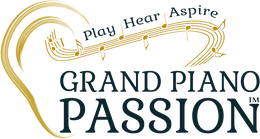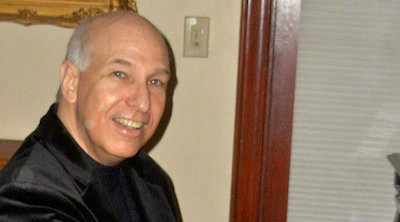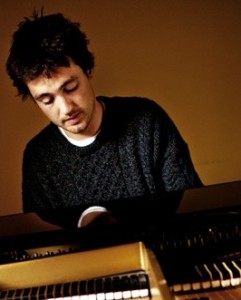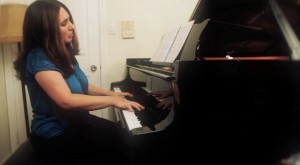Twentieth-century classical piano music, such as New Pictures at an Exhibition, for years intimidated Mark Cannon, a dedicated amateur pianist who is a psychiatrist by profession. Yet in the case of New Pictures, the composer, Seymour Bernstein, happened to be Mark’s teacher. Mark learned two pieces from the work for one of Seymour’s birthdays—the video below shows Mark playing a selection—and his pianism leapt ahead in an unexpected way.
Tell us about New Pictures at an Exhibition and how you came to study that work.
As in Mussorgsky’s Pictures at an Exhibition, the movements are coupled with paintings. While Mussorgsky’s piece used paintings by a single, little-known artist, Seymour Bernstein chose paintings by a number of famous artists such as Watteau, Raphael, Degas, Chagall, Klee, and Picasso. The musical pieces wonderfully capture the mood and spirit of each painting. Performances of the work are often accompanied by projection of each painting on a screen, and this can be quite spectacular. Guernica, based on Picasso’s famous painting, is the largest movement of the work. It is followed by the short Epilogue, the final movement, which is sort of a winding-down from the Guernica and therefore the one movement that doesn’t have a painting of its own.
For Seymour’s 70th birthday, in 1997, his students planned a surprise party. He knew about it and in fact approved the date and the guest list! But the surprise was that we all learned compositions of his and performed them for him. This was when I learned the Guernica and the Epilogue. I hadn’t done much in the past with modern music and never would have had the confidence to feel I could learn such pieces, except that Seymour’s party gave me the motivation—and perhaps hubris!—to embark on the labor of love to learn them.
And then you performed New Pictures at a concert several years after the birthday party?
Yes, I’ve performed the Guernica and Epilogue many times since then, always with success and with an emotional and physical connection unlike what I’ve experienced with any other music, enabled by Seymour’s evocation of the paintings and his marvelous use of the resources of the piano. The first time was in a recital at Merkin Concert Hall in Manhattan in 2000 (where this video was taken). After the scheduled program, I told the audience I was giving them a “pop quiz.” The encore was going to be a mystery piece by one of the composers on the program—Bach, Busoni, Beethoven, Chopin, Schubert, or Seymour Bernstein—and they were to guess, by show of hands. The piece I played was another one from the New Pictures set, The Madonna, after a painting by Raphael—another surprise for Seymour, since again I had worked on it secretly.
Chopin won in a landslide. Nobody thought it was by Seymour! Of course Seymour himself didn’t even raise his hand when his name was mentioned—that would have been a bit of a giveaway. And he was very amused that most of the people thought it was Chopin.
Your decision to study your teacher’s works opened up new potential in your development as a pianist.
It’s true. It gave me confidence to learn other modern music, especially Scriabin’s 9th Sonata, a very complicated work which has been my main performance piece of late. When I started learning New Pictures, I wasn’t sure I had any idea what I was doing, or that I would really be able to learn them or play them in any decent way. But my success with the pieces, especially Seymour’s approval when he first heard them, was a revelation. It gave me the confidence to bring them to amateur piano competitions, where the response has invariably been enthusiastic, by both judges and the audience. In fact, the judges have usually asked if they could keep the copies of the score that I had brought, and I’ve been thrilled to let them know that I hoped they would ask.
Chopin is my greatest musical love, and I had always doubted whether I could do any justice to music of other eras. It’s always great to find that we can do things that we had doubted! I was very pleased that when I played the Scriabin 9th Sonata at the recent Van Cliburn amateur competition, I was able to advance to the semi-finals, which for me was a great accomplishment.





0 Comments